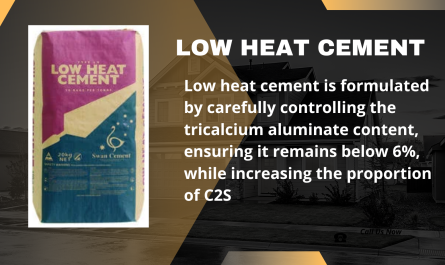PORTLAND POZZOLANA CEMENT
Definition:
Portland Pozzolana Cement (PPC) is crafted by grinding pozzolanic clinker with Portland cement or by blending Portland cement with fine pozzolana in a uniform manner. Alternatively, it can be formulated by augmenting Portland cement with pozzolana, alongside gypsum or calcium sulfate. Renowned for its resilience against various chemical attacks on concrete, PPC finds widespread application in construction projects. Its versatility is evidenced in applications ranging from marine structures to sewage works, and from bridges to dams and mass concrete works. Notably, PPC distinguishes itself as an eco-friendly alternative to Ordinary Portland Cement (OPC), attributable to its lower carbon footprint. The inclusion of pozzolanic materials in PPC enhances its properties, rendering it a sustainable choice for environmentally conscious projects. The term “pozzolana” denotes siliceous or siliceous and aluminous materials that, when finely divided and in the presence of moisture, undergo chemical reactions with calcium hydroxide to form compounds with cementitious properties. As such, PPC stands as a testament to both durability and environmental stewardship in the realm of cementitious materials.

Key features :
- Pozzolanic Materials: Portland Pozzolana Cement (PPC) predominantly incorporates fly ash, a byproduct of coal-fired power plants, as its primary pozzolanic material. Additionally, alternatives such as volcanic ash, calcined clay, or silica fume can serve as pozzolanic additives.
- Blending Process: During PPC manufacturing, pozzolanic materials are meticulously blended with clinker, the same material utilized in Ordinary Portland Cement (OPC) production. The proportion of pozzolanic material may vary but typically ranges between 10% to 35% by weight of the cement.
- Compressive Strength: PPC generally exhibits slower strength development compared to OPC but eventually achieves comparable strength over time. The setting time and early strength of PPC may exhibit slight delays due to the pozzolanic reaction.
- Workability: PPC often demonstrates superior workability and heightened resistance to cracking in comparison to OPC. The inclusion of pozzolanic materials enhances cohesiveness and diminishes the heat of hydration, contributing to improved workability.
- Durability: The pozzolanic reaction between cement and pozzolanic material engenders additional calcium silicate hydrate (C-S-H) gel, resulting in denser and more durable concrete. This augmented durability renders PPC well-suited for structures exposed to demanding environments, such as marine constructions.
- Sulfate Resistance: PPC offers enhanced resistance to sulfate attack, rendering it suitable for construction in regions with elevated concentrations of sulfates in the soil or water.
- Environmental Benefits: Incorporating pozzolanic materials in PPC reduces the reliance on OPC clinker, a primary source of CO2 emissions. Consequently, PPC boasts a diminished carbon footprint relative to OPC, aligning with principles of environmental sustainability.
- Applications: PPC finds application across a diverse spectrum of construction projects, encompassing general construction, dams, bridges, marine structures, and underground construction. Its versatility enables usage in analogous applications to OPC, with a preference in projects prioritizing sustainability.



